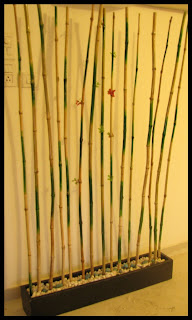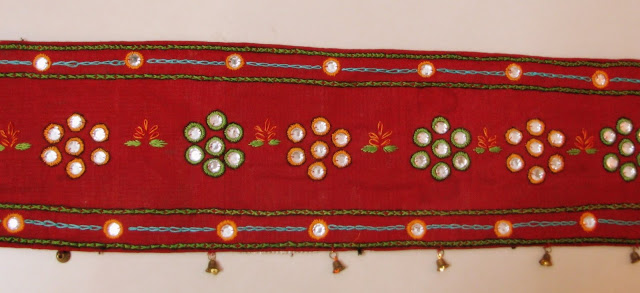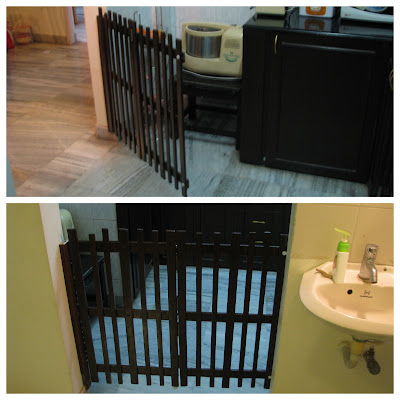 |
| Bamboo Room Divider / Wall Decoration |
 |
| Bamboo Decoration |
Room dividers are a great way to provide partition in a room with larger dimensions. Most commonly, these dividers are used between the living and dining space, when the hall and dining rooms are part of the same larger space. Some of the often used dividers are : wooden dividers, screens, book shelves, or the folding wooden panels.
Bamboo dividers can be a wonderful addition to the décor of the room and is a nice deviation from the regular space dividers. Because these partitions are not solid panels, they also create the perception of a bigger space while at the same time creating the much needed divide between spaces.
This particular divider can also be used as a wall decoration unit. In this case, we installed the bamboos in the backdrop of a plain wall to provide the wall emptiness with some glitz. The bamboo sticks were sanded, varnished and the artificial leaves added to the grand finale effect.
Let us know what you think.
Bamboo dividers can be a wonderful addition to the décor of the room and is a nice deviation from the regular space dividers. Because these partitions are not solid panels, they also create the perception of a bigger space while at the same time creating the much needed divide between spaces.
This particular divider can also be used as a wall decoration unit. In this case, we installed the bamboos in the backdrop of a plain wall to provide the wall emptiness with some glitz. The bamboo sticks were sanded, varnished and the artificial leaves added to the grand finale effect.
Let us know what you think.























